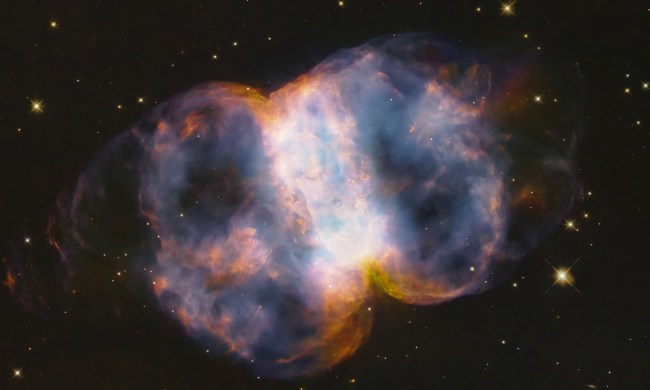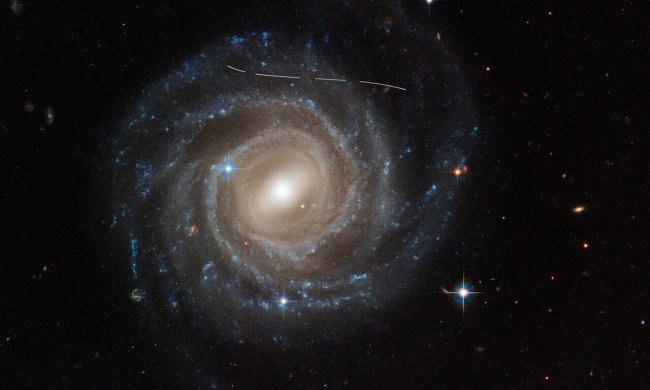
There’s something strange about black holes. Astronomers often find small black holes, which are between five times and 100 times the mass of the sun. And they often find huge supermassive black holes, which are hundreds of thousands of times the mass of the sun or even larger. But they almost never find black holes in between those two sizes.
That’s odd for several reasons, but one particular question it raises is how black holes develop. If they start out small and then gradually get bigger over time, then where are all the medium-sized black holes? And if they only come in small or huge sizes, why should that be? There’s nothing that we currently know about the physics of black holes that would prevent medium-sized black holes from existing.
So for years, astronomers have been searching for these elusive intermediate-mass black holes (IMBH). Now, the Hubble Space Telescope has uncovered some of the most compelling evidence to date of an IMBH within the Milky Way in the cluster of Omega Centauri.
This cluster is made up of around 10 million stars, and astronomers have been working on cataloguing these stars using Hubble images. And while they were cataloguing, they noticed something odd. “We discovered seven stars that should not be there,” said lead researcher Maximilian Häberle of the Max Planck Institute for Astronomy in Germany in a statement. “They are moving so fast that they should escape the cluster and never come back. The most likely explanation is that a very massive object is gravitationally pulling on these stars and keeping them close to the center.
“The only object that can be so massive is a black hole, with a mass at least 8,200 times that of our sun.”
That 8,200 figure is important because it puts the object firmly in the IMBH size range. Previous studies have hinted that there could be an IMBH in this region before, but this is the best evidence yet — and it points to a relatively nearby IMBH that could be studied further to learn more about black hole evolution.
Now, the researchers want to study this black hole in more detail using the James Webb Space Telescope to learn about its exact mass and position.
The research is published in the journal Nature.



